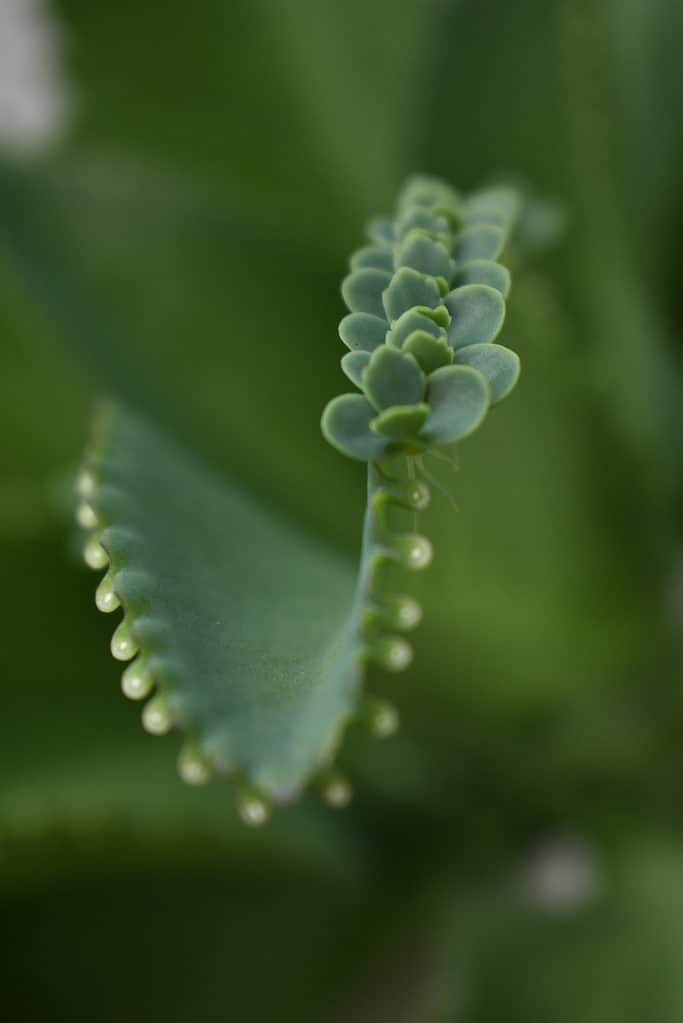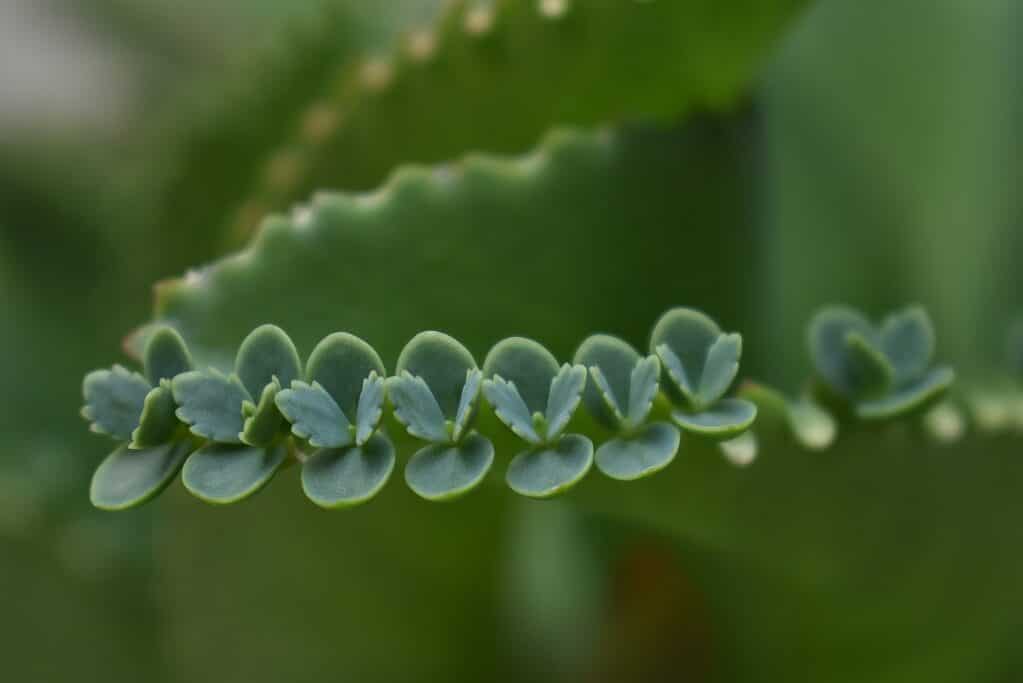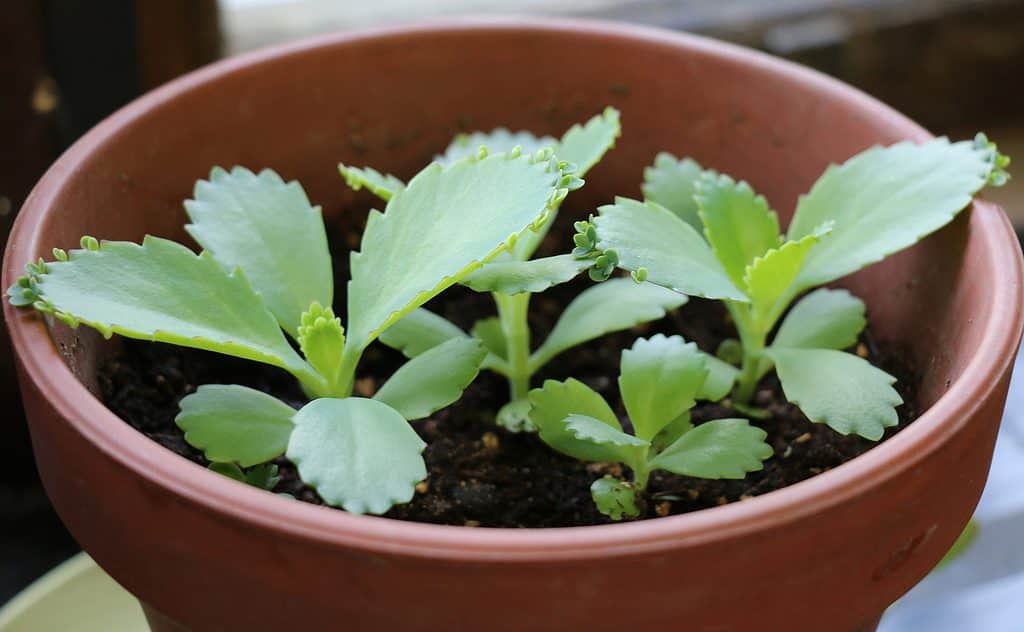One of the absolute easiest plants to propagate, the mother of thousands plant (also known as Bryophyllum daigremontianum or Kalanchoe daigremontiana) thrives indoors, in moderate drought, and looks amazing. It does have a few care tricks you’ll want to keep in mind as you grow the plant, particularly placement and watering, but if you’ve got the care in hand, propagation will be a snap.
Mother of Thousands – A Self-Propagator

The little growths on the edges of the leaves are actually baby plants!
©
A self-propagating plant is one that easily, quickly, and without help propagates itself when left alone. In this case, self-propagation is done through plantlets – not seeds – and quickly and easily spreads, if the plantlets are given ground to grow on. They may even cling to cacti and other plants and grow as a sort of parasitic plant if the need arises.
Plantlets are the little baby plants that mother of thousands and a few other species grow on the mature plant and then drop or scatter with the help of nature.
Along the edges of the leaves, you’ll notice these tiny vertebrate-looking growths (thus the nickname devil’s backbone). These are the plantlets.
You can choose to propagate the mother of thousands yourself, though, if you’re ready before the plant naturally drops them off.
How to Propagate Mother of Thousands
Propagating mother of thousands plants is easy. Follow the simple steps below and you’ll be rolling in them soon enough.
Detach the Plantlets

Detach the tiny plantlets to propagate more mother of thousands plants.
©
As mentioned above, the little growths along the edges of the leaves are the plantlets. When these are mature enough to propagate, a gentle brushing along the edges of the leaves should detach them easily. If they don’t come off without pulling, give them a few more days before trying again.
Caution: Mother of thousands plants are toxic. Wear gloves at all times when dealing with direct contact with the plant.
1. Spread Cacti or Succulent Potting Mix Into a Container or Pot
Fill a shallow container or pot with cacti or succulent potting mix and ready it for planting.
2. Place the Plantlets in the Potting Soil
Don’t try to dig, but rather place the plantlets, root-down, into the potting mix. Don’t worry about pressing them down.
3. Mist and Cover with Plastic
Lightly mist the soil with water around the plantlets.
Then, to protect the plantlets and help them latch onto that soil with their roots, it’s best to place a light plastic cover over them in the pot.
4. Place in Indirect Sunlight
Next, put the plantlets tray or container into a location where they will receive bright, indirect light. This could be under a grow light, if preferred, or in an easterly-facing window. Be sure the plantlets aren’t in direct, hot sun, though, or they will scorch and die.
5. Keep the Tray Moist
Every several days, check the soil and ensure the tray is slightly moist. Avoid over watering, though, and avoid misting the plantlets themselves.
6. Re-Pot When They’ve Taken Root

©lqlqlqlq75 / Pixabay – License
That’s it! You’ve got little baby other of thousands in the making. Many, if not all, will take root, and soon be ready to be planted in their own pots. Once those roots “dig in,” they’re ready for their own planters.
Looking for more information on mother of thousands plants? Check out our full care guide, watering guide, the meaning of mother of thousands, indoor care guide, ideas for hanging planters, and the plant profile for mother of thousands plant.
The photo featured at the top of this post is © iStock.com/PUGUN SJ
Thank you for reading! Have some feedback for us? Contact the AZ Animals editorial team.






